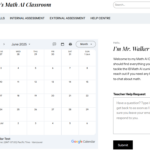“When am I ever going to use this?”
No matter what level of education you’ve found yourself in, from formal teaching to simply answering a child’s question, you’ve no doubt been asked this question before. For some topics, such as home economics or shop class, the answer is simple: all of the time! But for the dreaded quadratic formula, the application can be hard to contextualize. For most people, they’ve never had to use it again, but does that mean it doesn’t belong in our high school curriculum?
Enter Jeff Hopkins, former Superintendent of School District No. 64 and founder of the Pacific School of Innovation and Inquiry. In the video below, Jeff Hopkins talks about the “silo”-like nature of the BC curriculum and a proposed competency-based solution:
The “silo” model that Jeff Hopkins conjures when describing the current state of BC’s education system is pointing to the segmented nature of our curriculum with courses like Calculus 12, English Language Arts 10, or Arts Education 9. When dividing the teachable areas into these “silos,” we make it difficult to communicate the purpose or use of a particular lesson since there is only enough time to learn particular concepts and practice them to some standard. This abstraction often leads to a loss of motivation to learn the subject and, as a result, failure to integrate the lesson into their everyday life.
This is no more evident than in the BC Math Curriculum. Let’s take Foundations of Mathematics 12 for example; many of the units in this class train students to solve abstract algebra problems and graph elementary functions. These are fundamental skills for a student looking to pursue careers in STEM but what about a grocery store clerk? Or a mechanic? Or a gardener? Since society doesn’t value one profession over another (certainly a topic for another day, but I’m speaking as an idealist), should our school system aim to prepare everyone for their lives after high school or just the ones looking towards post-secondary education?
This is where Jeff Hopkin’s notion of a competency-based curriculum succeeds wonderfully: he proposes to focus on broader learning outcomes such as critical thinking, creative thinking, and identifying historical events and their significance (to name a few). Not only does this solve the issue of preparing each student for life after school, but it also answers the student’s question “When am I ever going to use this?” Now instead of learning the quadratic formula so you can pass a test, it becomes obvious that you’re learning it to develop your math literacy so that you can think critically and creatively when faced with unfamiliar problems. This competency approach would allow for new teaching techniques like starting with a social problem, identifying a mechanism (explained with, for example, physics), and solving it with a mathematical model. This type of learning lends context to the specific skills being learned and makes the process fun and rewarding when completed.





